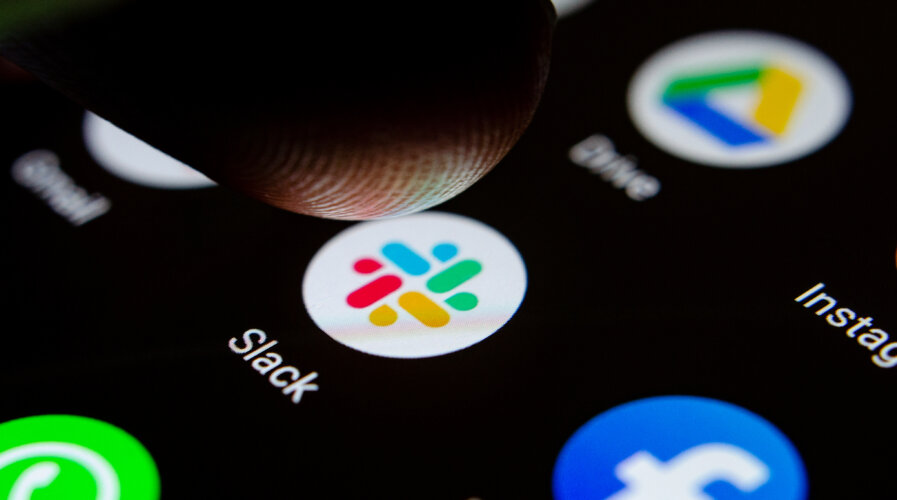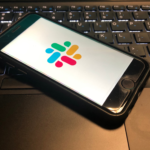
Igniting the AI spark: How Slack GPT revolutionizes the way we work and collaborate
|
Getting your Trinity Audio player ready... |
- Slack announced Slack GPT, envisioning a new era of customer productivity by amplifying Slack’s capabilities.
- Slack GPT aims to provide intelligence across automation, shared knowledge, and conversations in Slack.
A month ago, Slack introduced a ChatGPT app as the first step in their larger vision for integrating generative AI into their platform, enhancing productivity. Slack’s unique advantage lies in its vast institutional knowledge, encompassing daily projects, topics, teams, messages, files, clips, and huddles.
Slack recently announced Slack GPT at World Tour NYC, envisioning a new era of customer productivity by amplifying Slack’s capabilities.
The strategy of this new era revolves around three pillars. Firstly, Slack aims to integrate AI into the user experience natively, enabling smarter work, faster learning, and better communication. For instance, AI could generate conversation summaries in active channels available in Slack with a single click.
“Secondly, we’re exploring AI’s role in our new platform, enabling customers to build no-code workflows with AI actions throughout, simplifying AI-based automation creation and deployment. We’re approaching this with multiple LLM options, catering to companies wanting to use OpenAI’s ChatGPT or create custom models. Our platform provides various LLMs, allowing businesses to integrate their own for their unique needs,” explained Ali Rayl, Senior Vice President of Product at Slack.
Lastly, with the new Einstein GPT and Slack, Slack will become the conversational interface for Salesforce Customer 360. This means that Einstein GPT will be the interface in Slack for customers to access insights from all of their real-time customer data, helping them better understand their customers across all Salesforce products a company uses.
Lidiane Jones, CEO of Slack, believes that generative AI holds immense potential to transform how work is conducted and greatly enhance business productivity. Jones emphasizes that the true strength of this technology lies in AI’s ability to analyze and act on a company’s most valuable data from its most reliable source — its internal knowledge.
“Slack GPT is the conversational AI platform of the future, helping organizations easily tap into their trusted customer data and essential employee knowledge so they can work smarter and make smarter decisions faster,” noted Jones.
What can Slack GPT do?
Slack GPT aims to provide intelligence across automation, shared knowledge, and conversations in Slack. More importantly, the AI can be tailored to a company’s specific requirements, whether they want to integrate a preferred language model, create their own AI-driven no-code workflows, or seamlessly incorporate AI into the Slack experience.
Native capabilities include AI features designed to blend effortlessly into Slack’s interface, making it simpler and more convenient to access contextual AI assistance. In the future, customers could:
- Summarize conversations and huddles: Quickly catch up on unread Slack messages with one click or have Slack GPT join a huddle and provide a quick summary and follow-up steps.
- Enhance communication: With AI assistance integrated contextually into Slack’s message composer and the newly launched Slack canvas, users can effortlessly refine content, modify the tone, and more.

AI Assisted Writing (Source – Slack)
Integrations in Slack’s app directory offer a fast and secure method for customers to expand the functionality of third-party or in-house LLMs already in use within Slack. With Slack GPT, customers can:
- Develop no-code workflows that automate work across Slack, LLMs, and their software tool ecosystem. In Workflow Builder, users can instantly connect a generative AI app to a workflow.
- Incorporate generative AI apps from leading platforms like ChatGPT from OpenAI and Claude from Anthropic, built on Slack’s trusted platform. These apps will not be used to train their large language models.
- Create custom integrations. Customers can leverage a thriving Slack developer community to develop custom integrations that harness intelligence powered by top LLMs.
When asked if the generative AI in Slack can learn from user interactions and adapt to changing contexts or if it will be a fixed solution, Rayl explains that the answer depends on the context. Companies don’t want their private data used to train public LLMs. Improving these models involves training with private customer data, which raises concerns. However, Rayl highlights the importance of making Slack better and more accessible by refining the way questions are asked, a concept called “prompt engineering.”
Slack is considering where to offer users a conversational interface versus a more structured approach to ensure the right question is asked for the LLM. Rayl said that Adobe Firefly is a good example of this, where users are given controls to help craft their query better and increase the likelihood of obtaining the desired result.
By now, most people are familiar with the incorrect answers that can come back. Another challenge being considered is how to provide design nudges and prompts to encourage users to verify the work. Questions like “Does this look correct to you?” and linking to source content are being considered.
“When summarizing information from a company’s internal Slack data, how can users be given easy links to cross-reference the information and confirm its accuracy? This design challenge will involve experimentation and determining the best way to expose and ensure users are confident in the answers they receive,” Rayl concluded.
READ MORE
- Safer Automation: How Sophic and Firmus Succeeded in Malaysia with MDEC’s Support
- Privilege granted, not gained: Intelligent authorization for enhanced infrastructure productivity
- Low-Code produces the Proof-of-Possibilities
- New Wearables Enable Staff to Work Faster and Safer
- Experts weigh in on Oracle’s departure from adland


